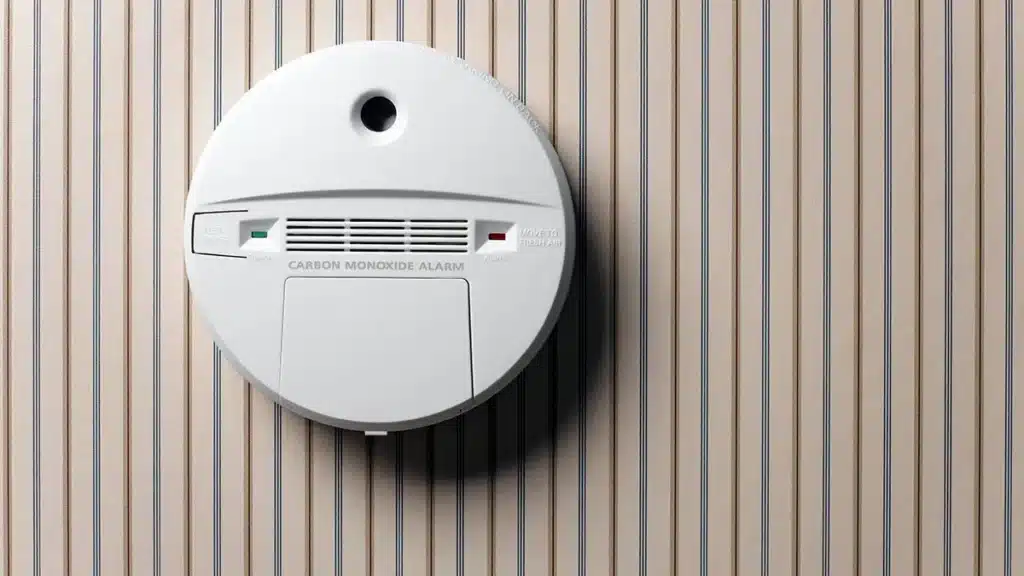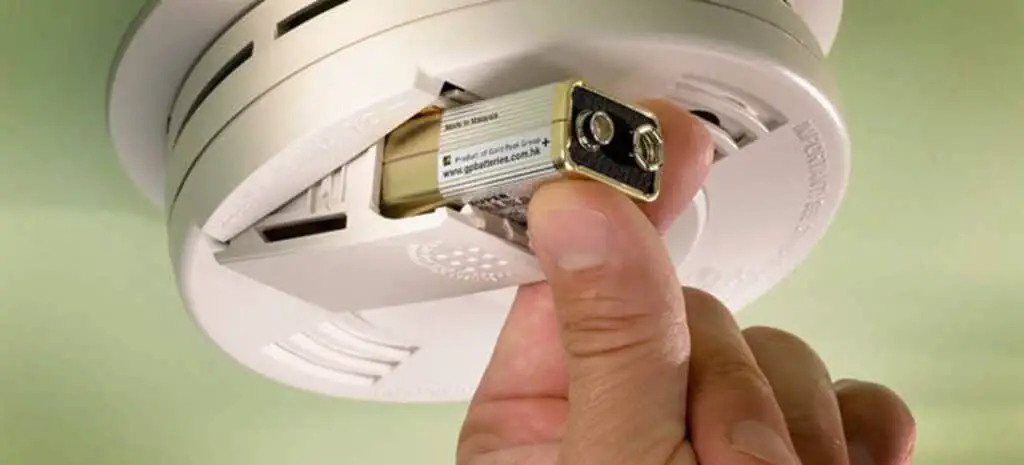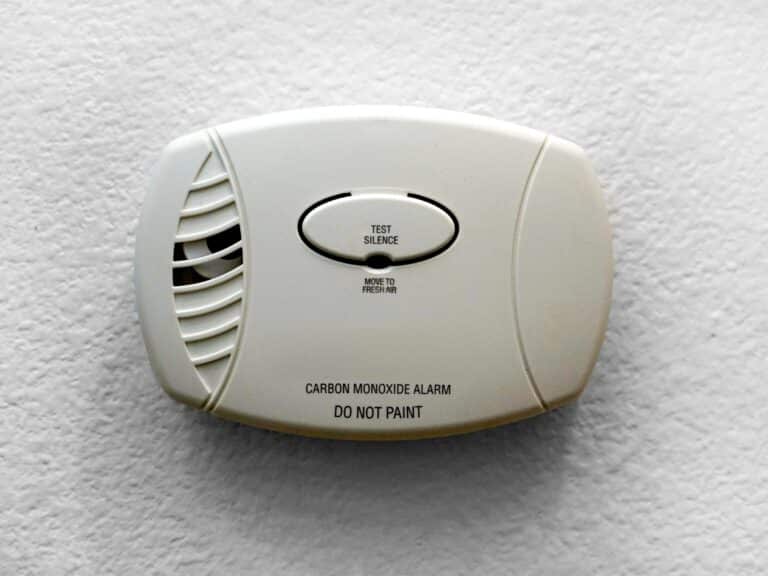Introduction
Why Does Carbon Monoxide Detector Beep: A carbon monoxide (CO) detector beeps to alert occupants of a building when it detects elevated levels of carbon monoxide gas in the air. Incomplete combustion of carbon-containing fuels, including those used in gas furnaces, water heaters, stoves, and cars, can produce carbon monoxide, a colorless, odorless, and tasteless gas. It is highly toxic and can be deadly in high concentrations. Carbon monoxide detectors typically have different alarm levels based on the concentration of CO gas in the air and the time of exposure.
When a carbon monoxide detector senses a certain level of carbon monoxide in the air, it triggers an alarm to warn people that there is a potential danger. The beeping sound serves as an auditory signal to prompt occupants to take immediate action, which usually involves leaving the area or building and seeking fresh air. This quick response can help prevent carbon monoxide poisoning. Which can lead to symptoms such as dizziness, headache, nausea, confusion, and even unconsciousness or death if exposure continues.
Carbon monoxide detectors operate using various technologies such as electrochemical sensors, metal oxide semiconductors, and biomimetic sensors. These sensors detect the presence of carbon monoxide gas by measuring its concentration in the surrounding air. When the concentration of carbon monoxide reaches a certain threshold, the detector triggers an alarm. There are often different alarm thresholds for low-level exposure (long-term exposure over hours) and high-level exposure (immediate danger). The beeping pattern or alarm sound may vary to indicate different levels of danger.

What should I do if my carbon monoxide detector is beeping?
Different Types of Beeps and Chirps:
Since carbon monoxide has been detected, you should immediately get outside and contact the authorities. 1 Beep Every Minute: Low Battery. It is time to replace the batteries in your carbon monoxide detector. 5 Beeps Every Minute: End of Life.
Don’t Ignore It: Never disregard a beeping carbon monoxide detector. Treat it as a serious warning of a potential life-threatening situation.
Evacuate the Area: If the carbon monoxide detector is beeping, leave the area immediately. Move to an open space with fresh air. If you’re in a building, exit through the nearest door and avoid using elevators.
Don’t Investigate Alone: Avoid trying to locate the source of the carbon monoxide leak by yourself. Once you’re in a safe location, call for professional assistance or emergency services to assess the situation. Do not return to the area until authorities give the all-clear.
Call Emergency Services: Dial emergency services (911 or the relevant emergency number) to report the potential carbon monoxide leak. Provide them with your location, the fact that your carbon monoxide detector is beeping, and any other relevant information.
Check for Symptoms: If you or anyone else in the vicinity experiences symptoms of carbon monoxide poisoning such as dizziness, nausea, headache, confusion, or difficulty breathing, seek medical attention immediately.
What does 3 beeps mean on a carbon monoxide detector?
MALFUNCTION
2. Three beeps, at 15-minute intervals = MALFUNCTION. The unit is malfunctioning. Contact the manufacturer or the retailer where you purchased the alarm.
Low Battery Warning: One of the most common reasons for three beeps on a carbon monoxide detector is a low battery warning. When the batteries are running low. When the batteries in the detector are getting low, it will start making a buzzing noise. This warning is crucial because a properly functioning detector is essential for detecting carbon monoxide leaks and ensuring your safety.
Malfunction or Sensor Failure: In some cases, three beeps can indicate a malfunction or sensor failure within the detector. This could mean that the device is no longer capable of accurately detecting carbon monoxide gas. If you’ve recently replaced the batteries and the beeping continues, it’s important to address this issue promptly. Discontinue use of the detector and contact the manufacturer or a professional for guidance.
End of Life Warning: Some carbon monoxide detectors are designed to have a limited lifespan, usually around 5 to 7 years. Three beeps might indicate that the detector has reached the end of its operational life and needs to be replaced. This is because the sensors and components inside the detector degrade over time, affecting its accuracy and reliability.
False Alarm or Interference: In certain situations, interference from other electronic devices. High humidity, or other environmental factors can trigger false alarms. If you experience a one-time occurrence of three beeps and there’s no sign of carbon monoxide or any related symptoms. It’s worth considering the possibility of a false alarm.
What causes carbon monoxide in a house?
How can carbon monoxide build up in a home? Incorrectly installed, poorly maintained, or poorly ventilated appliances, such as stoves and hot water heaters, are the most typical sources of carbon monoxide buildup. Poorly ventilated fireplaces and other gas- or wood-burning appliances can also pose danger.
Fuel-Burning Appliances: Many household appliances and systems that burn fuels for heating, cooking, or power generation can be sources of carbon monoxide. Common appliances include gas or oil furnaces, water heaters, gas stoves, ovens, and fireplaces. Incorrect installation, venting, or maintenance of these equipment can lead to dangerous levels of carbon monoxide buildup.
Improperly Ventilated Appliances: Proper ventilation is essential to safely exhaust the byproducts of combustion, including carbon monoxide, outside the house. Carbon monoxide can build up within a building if the chimneys and flues are not functioning correctly or have been damaged.
Vehicular Exhaust: Garages and enclosed spaces where vehicles are operated can become sources of carbon monoxide if the vehicle’s exhaust system is not functioning correctly. Carbon monoxide from vehicle exhaust can seep into the living spaces of the house if proper precautions are not taken.
Generators and Portable Heaters: Portable generators and fuel-burning space heaters can also produce carbon monoxide if they are used indoors or in poorly ventilated areas. It’s crucial to follow the manufacturer’s instructions and safety guidelines when using such devices.
Can carbon monoxide come from AC?
The short answer is no, air conditioners are unable to produce carbon monoxide. Only devices that burn fuel can produce carbon monoxide. AC units run on electricity, so there’s no possible way for them to produce carbon monoxide.
Combustion-Powered Systems: Some commercial and industrial buildings use absorption chillers or other types of air conditioning systems that rely on combustion to generate heat. If combustion is not properly regulated or if a malfunction occurs, carbon monoxide can be produced. However, you won’t find many homes equipped with this sort of technology.
Improper Ventilation: Even though carbon monoxide isn’t made by the air conditioner itself. Carbon monoxide can build up even when air isn’t working right. One example is if the exhaust flue of a fuel-burning object, like a furnace, is close to where the air conditioning system takes in air. It is possible for carbon dioxide to be introduced. This shows how important it is for all fuel-burning appliances to have the right venting and air intake places.
Indoor Air Quality Concerns: While not directly related to carbon monoxide. Poor indoor air quality can impact the health and safety of occupants. If an AC unit is not serviced regularly or if the air filter is unclean, it can recirculate pollutants, allergens, and other contaminants in the interior air, which can have negative effects on the health and comfort of the building’s occupants.
Carbon Monoxide Detectors: It’s a good practice to have carbon monoxide detectors installed in homes. Even if the air conditioning system is not a direct source of carbon monoxide. These detectors can provide an early warning in case of a carbon monoxide leak from other sources. Such as malfunctioning fuel-burning appliances or improperly ventilated areas.
How do you know if there is carbon monoxide?
In this blog, we’ll take a look at some common signs of a carbon monoxide leak, including:
- The smell of exhaust gases.
- Pilot light is frequently blowing out.
- Increased soot buildup in your chimney vent.
- Brownish-yellow stains around your gas appliances.
- The onset of flu-like symptoms.
1. Install Carbon Monoxide Detectors: The most reliable way to detect carbon monoxide is by installing carbon monoxide detectors in your home or other enclosed spaces. These detectors are sensitive enough to detect even trace amounts of CO in the air and sound an alarm when unsafe levels are reached. Make sure to place detectors near sleeping areas and on every level of your home.
2. Look for Physical Symptoms: Carbon monoxide poisoning can cause a range of symptoms that resemble the flu or other illnesses. These symptoms can include headaches, dizziness, nausea, vomiting, shortness of breath, confusion, and fatigue. If multiple people in the same space experience similar symptoms, it could be a sign of carbon monoxide exposure.
3. Pay Attention to Pets: Pets can also be affected by carbon monoxide. If your pets seem lethargic, disoriented, or unusually sick. It might be an indication of elevated carbon monoxide levels in your environment.
4. Condensation on Windows: If you notice excessive condensation or moisture buildup on windows or walls. It might be a sign of poor ventilation. Inadequate ventilation can contribute to higher carbon monoxide levels.
5. Sooting or Staining: Sooting, staining, or discoloration around fuel-burning appliances, vents, or chimneys can indicate improper combustion and the potential for carbon monoxide production. Regularly inspect these areas for any signs of abnormalities.
What does carbon monoxide smell like?
Carbon monoxide has no smell. It is an odorless, colorless gas that’s a byproduct of combustion. Because carbon monoxide can leak from your gas furnace, stove, dryer, water heater, wood stove or gas fireplace. It is essential to put safeguards in place for immediate detection when a leak occurs.
Physical Symptoms: Carbon monoxide poisoning can lead to symptoms that are often mistaken for the flu or other illnesses. These symptoms can include headache, dizziness, nausea, vomiting, confusion, shortness of breath, and weakness. If multiple people in the same space experience similar symptoms, carbon monoxide exposure could be a potential cause.
Carbon Monoxide Detectors: Carbon monoxide detectors are crucial for alerting occupants to the presence of the gas, even when it is not detectable by human senses. When these detectors detect dangerously high amounts of carbon monoxide in the air, they will sound an alarm to alert those nearby so that they can safely flee.
Blue Flames: If you have a gas stove, furnace, or other gas-burning appliances, pay attention to the color of the flame. A healthy gas flame should be blue. An orange or yellow flame might indicate incomplete combustion, which could result in carbon monoxide production.
Sooting or Staining: Soot or staining around fuel-burning appliances, vents, or chimneys can indicate a problem with combustion and potential carbon monoxide production.
In summary, carbon monoxide itself does not have a smell. Which is why relying on odor alone is not an effective way to detect its presence. Instead, it’s important to focus on using carbon monoxide detectors, recognizing the physical symptoms of exposure, and being aware of potential sources of carbon monoxide in your environment. Taking these precautions can help you protect yourself and your loved ones from the dangers of carbon monoxide poisoning.
Where is carbon monoxide mostly found?
Cars, vehicles, small engines, stoves, lanterns, barbecues, fireplaces, gas ranges, and furnaces all release CO into the air when they burn fuel. CO can build up indoors and poison people and animals who breathe it.
Homes with fuel-burning appliances, such as heaters (gas or oil), water heaters, stoves (gas or electric), fireplaces, and generators, provide a risk of carbon monoxide poisoning. Improper installation, poor maintenance, or inadequate ventilation of these appliances can lead to the accumulation of carbon monoxide indoors.
Office Buildings: Office spaces that use fuel-burning appliances for heating or cooking can also be potential sources of carbon monoxide. Poor ventilation or malfunctioning equipment can contribute to elevated levels.
Industrial Facilities: Industries that use combustion processes, such as manufacturing plants, power generation facilities, and refineries, can produce significant amounts of carbon monoxide. Proper ventilation and safety protocols are essential in these settings.
Cars and Trucks: Carbon monoxide is a byproduct of internal combustion engines in vehicles. While catalytic converters in today’s vehicles cut down on carbon monoxide emissions. Running a vehicle in an enclosed space like a garage or using heaters in a car during cold weather can lead to dangerous levels of carbon monoxide.
Urban Areas: In densely populated areas with heavy traffic, carbon monoxide can be found in the outdoor air due to vehicle emissions. However, outdoor levels are generally not high enough to pose an immediate health risk.
Wildfires: Forest fires and wildfires can release carbon monoxide and other pollutants into the air, especially during periods of intense burning.
Can AC stop carbon monoxide?
While air conditioners can’t create carbon monoxide (like gas-powered furnaces or boilers can). They can help circulate it throughout your home if you already have a carbon monoxide leak.
Air conditioning systems, particularly those with central ventilation components, help in maintaining proper indoor air quality by exchanging indoor air with fresh outdoor air. Good ventilation is essential for diluting indoor pollutants, including carbon monoxide. You may help promote healthy indoor air by keeping your air conditioner well-maintained and operating as it should.
Some advanced air conditioning systems include indoor air quality monitors that can detect the presence of pollutants, including carbon monoxide. While these monitors are not standard in all AC systems. They can provide an added layer of safety by alerting occupants to the presence of harmful substances.
Properly sealed ducts and well-maintained AC systems can help prevent the infiltration of outdoor air pollutants, including carbon monoxide, into indoor spaces. This contributes to maintaining a healthier indoor environment.
While AC systems do not stop carbon monoxide, placing carbon monoxide detectors strategically throughout your home can provide an early warning in case carbon monoxide levels rise. This allows you to take prompt action to mitigate exposure.
Regular maintenance of heating systems, fuel-burning appliances, and other potential sources of carbon monoxide production can prevent malfunctions that might lead to dangerous gas emissions. A well-maintained heating system reduces the risk of carbon monoxide entering your living space.

Conclusion
The beeping of a carbon monoxide detector serves as a critical warning mechanism designed to protect human lives. Operating on various detection technologies, these detectors are engineered to sense the presence of the colorless, odorless, and highly toxic carbon monoxide gas. When concentrations of this gas rise to dangerous levels within an enclosed space. The detector triggers an alarm through a distinctive beeping pattern. This audible signal promptly alerts occupants to the potential threat. Allowing them to take immediate action by evacuating the area, seeking fresh air, and contacting emergency services.
Regular testing, proper maintenance, and accurate placement of carbon monoxide detectors are essential practices to ensure their reliability. By heeding these warning signals and responding swiftly, individuals can effectively mitigate the risks associated with carbon monoxide detector exposure and safeguard their well-being. The beeping of a carbon monoxide detector stands as a vital link between the imperceptible threat of carbon monoxide and the safety of those within its range. Emitting its distinct alarm when detecting elevated levels of this lethal gas, the detector’s beeping serves as a tangible reminder of the invisible dangers that can lurk in our surroundings.
This auditory alert is a call to action, prompting us to prioritize our well-being and that of our loved ones. By understanding the importance of this warning mechanism. Staying vigilant through regular maintenance and testing, and responding promptly to its signals. We can collectively enhance our preparedness against the silent menace of carbon monoxide, ensuring that our homes and spaces remain sanctuaries of safety.

